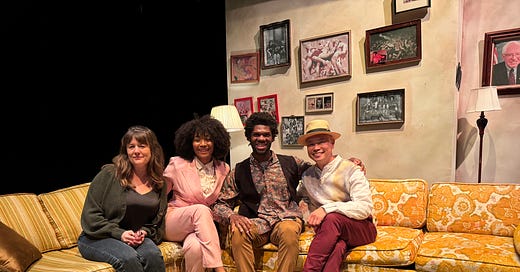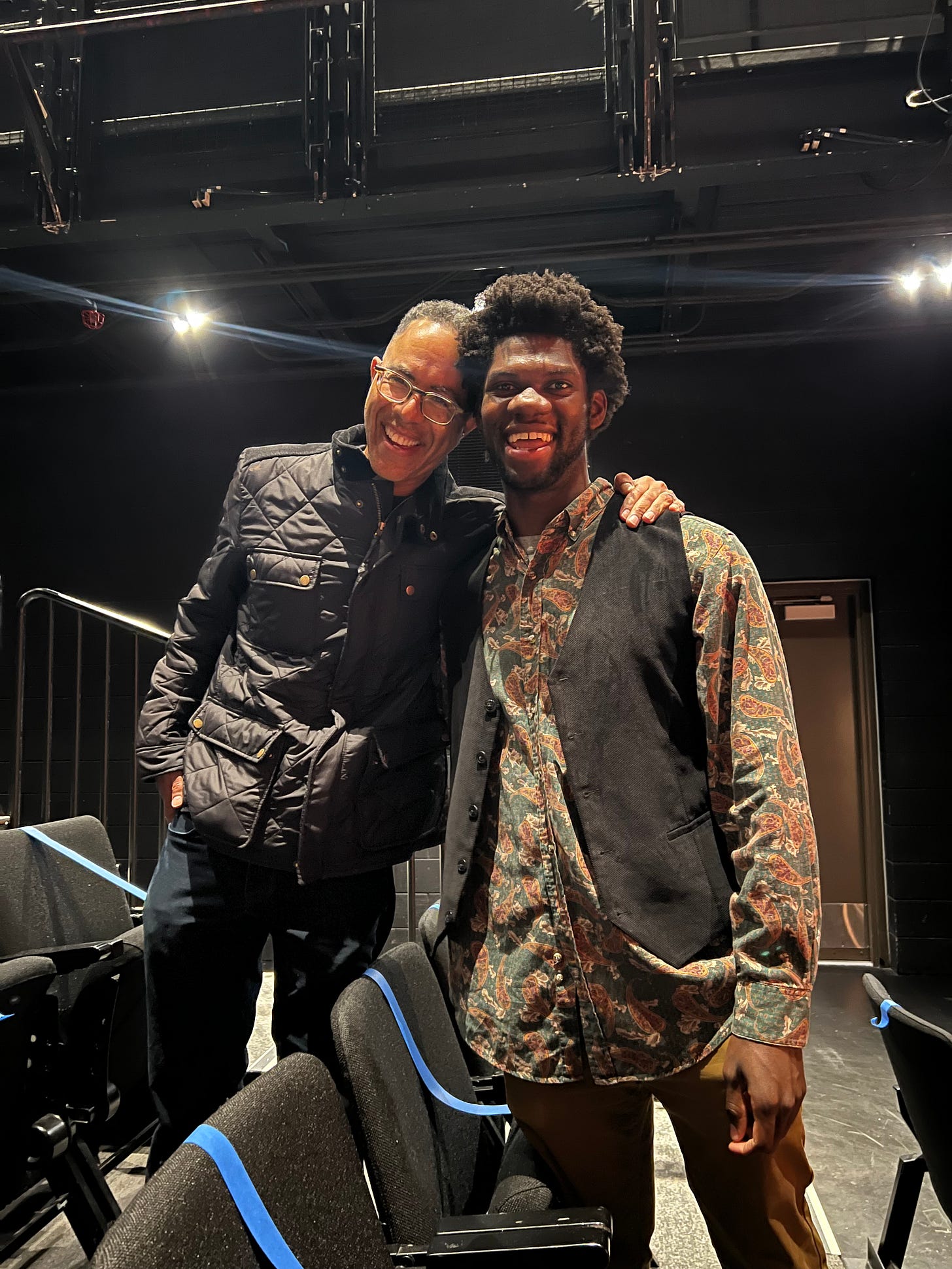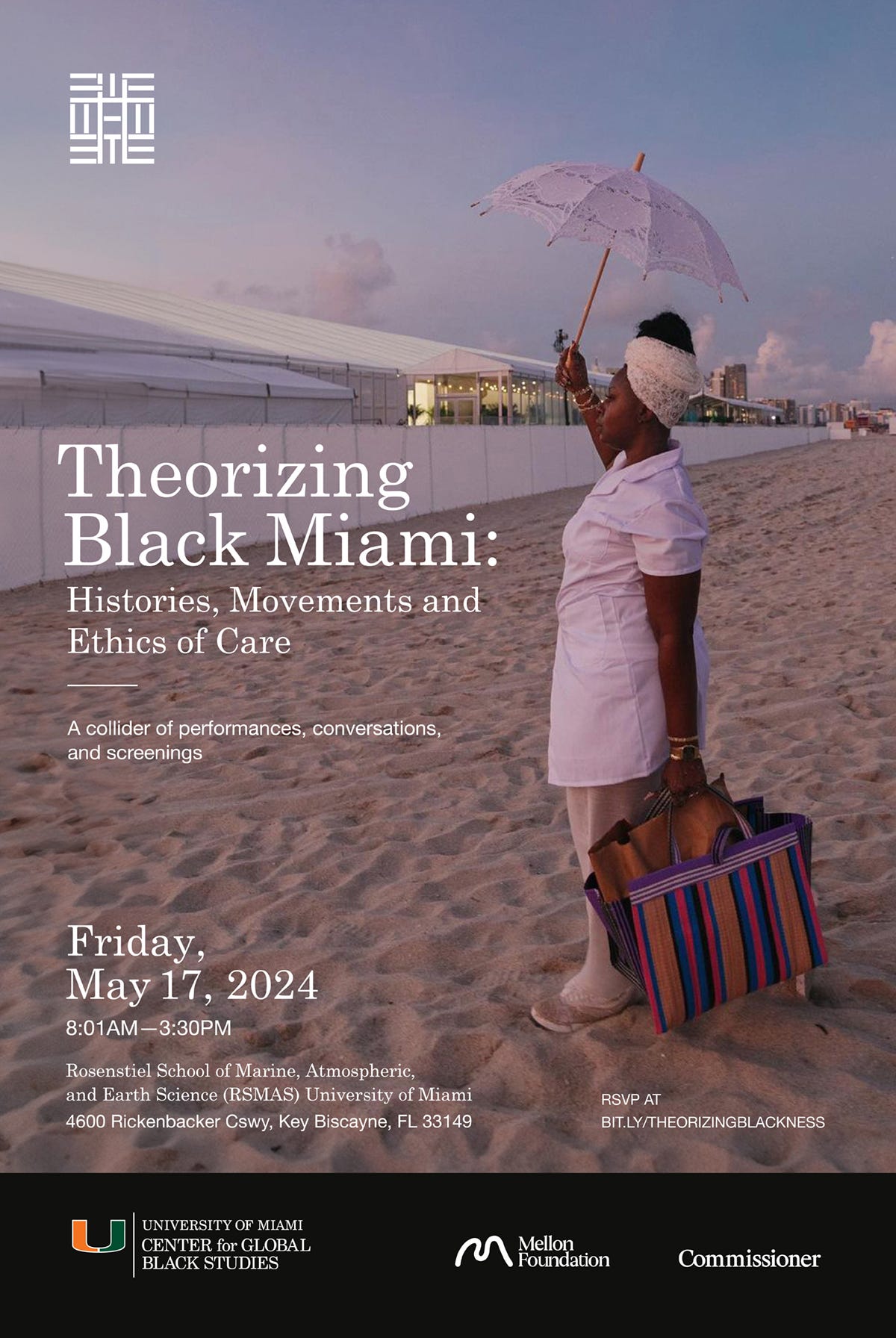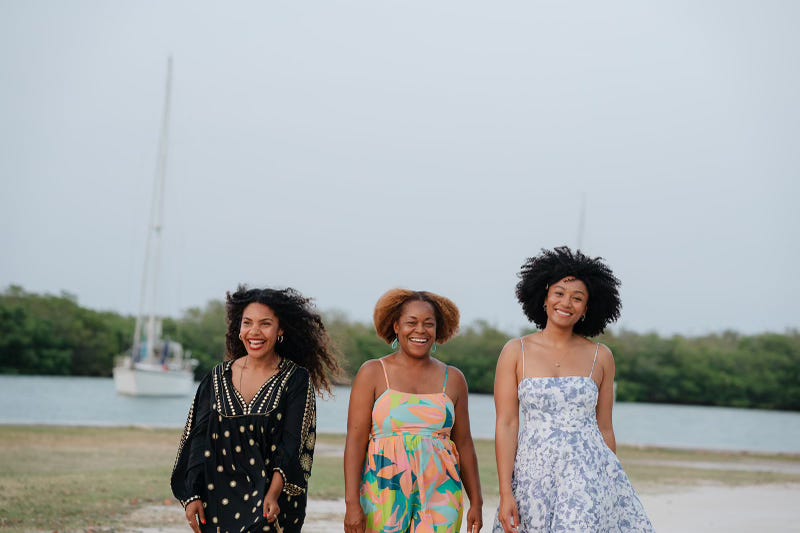Newsletter Six: Adventures in Dramaturgy— 809 Almond by Mylan Gray
As a new faculty member at UCSD, I had the opportunity to dramaturg a suspenseful, biting dark comedy from the brilliant mind of Mylan Gray. At the start of 2024, I began conversations with Mylan about his play-in-progress, which completely intrigued me, made me laugh, and left my jaw dropping. Presented as part of the Wagner New Play Festival, 809 Almond took me on an adventure from the page to the stage. It was a distinct pleasure to observe the directorial work of Stephen Buescher. The actors were larger than life, yet still grounded in their nuanced portrayals. The design team, crew, stage managers, and everyone involved delivered magic.
For further insight into my admiration, here’s my dramaturgical note:
809 Almond is a beautiful home steeped in secrets. If its walls could speak, they would likely recount tales of radical activism. They might boast of the Berkeley Friendship Park protest that began in its front yard, of the Grateful Dead performing in the garden, of serving a sandwich to Huey P. Newton in the kitchen, and of transforming into a hippie haven amidst rampant hypercapitalism. Or, perhaps they would whisper a slightly different tale.
From the outside, the Victorian splendor of 809 Almond stands as a beautiful contradiction. With "two living rooms, a one-acre garden, a dining room, a game room, a sun room, and a massive kitchen," this stunning 8-bedroom mansion harks back to an era before the Bay Area was synonymous with tech giants, gentrification, and an unrelenting housing crisis.
The drama unfolds with the home's occupants, members of a progressive co-op, entangled in this speculative paradox. Each member embodies the structural dilemma of their residence, when their considerable privileges clash with the socialist ideals and historic roots of their home. The burden of their substantial intergenerational wealth fuels a compulsion to absorb a Black roommate into Almond’s walls.
Yet, Angela’s presence isn’t seamlessly integrated into this "progressive dystopia" (Savannah Shange, 2019). She arrives with her own set of desires, beliefs, and aspirations—an array of ideas not easily understood just because Stephanie took an Introduction to Black Studies course. Like the house, Angela harbors her own secrets. Her inability to conform perfectly offers the audience a chance to ponder whether discussions about Black people—without a diverse representation of Black voices—are ever truly genuine.
These competing narratives of how liberal politics manifest reach a climax as the 2020 Black Lives Matter Movement erupts just outside their door. As the city around them ignites, the non-Black residents of 809 Almond must face the limits of their outward-facing politics amid internal discrepancies. With a Black girl magic force field, might Angela be the catalyst Almond needs in this critical moment? Or, will her enigmatic arrival ultimately serve a greater purpose?
Despite their well-intentioned politics, the co-op can never fully uncover all the secrets of 809 Almond, just as they can’t fully understand Angela’s complexities. 809 Almond allows for the exploration of a Black woman's interiority—and the challenges that may arise in ostensibly progressive spaces when they finally make room for such complexities to make themselves at home.
On Tuesday, May 14th, I moderated a thought-provoking talk-back with Mylan and two esteemed academics: Dr. Jennifer Nations, Managing Director of UCSD’s Homelessness Hub, and Professor K. Wayne Yang, Provost of John Muir College at UCSD. Provost Yang’s deep knowledge about community organizing, the Bay Area, and the Black Panthers brought invaluable insight into the political context mirrored in 809 Almond. Dr. Nations’s expertise in neoliberalism and ideologies of “deserving” citizenship illuminated the play’s potential political implications in community organizing and academic discourse.
In addition to an attentive audience who asked insightful questions and caught all the Easter eggs, this enriching dialogue underscored the profound layers within 809 Almond, highlighting its relevance to contemporary theater. This conversation left me pondering even more about what transpired within those walls and wondering... is Angela okay?
Left to right: Jennifer Nations, Mysia Anderson-White, Mylan Gray, and K. Wayne Yang
Stephen Buescher and Mylan Gray
Left to right: Mysia Anderson-White, Mylan Gray, K. Wayne Yang, and Jennifer Nations
Play flyer
Art I Can’t Stop Thinking About:
Theorizing Black Miami: Histories, Movements and Ethics of Care
“On the 70th anniversary of Brown v. The Board of Education, we [gathered] on the shorelines of the historic Virginia Key Beach to reconsider the intersecting legacies of racial segregation in educational, labor, and leisure spaces in Miami. Held within a three-act structure, our gathering [featured] embodied performances, film viewings, and academic call-and-responses from a range of disciplinary and generational perspectives.”
Can’t wait to share more about this very special collider I co-convened with Dr. Donette Francis, Director of the University of Miami’s Center for Global Black Studies, and Dejha Carrington, co-founder of Commissioner, an art membership program that helps people collect the work of contemporary artists in their cities. Working with them was an absolute dream come true!









